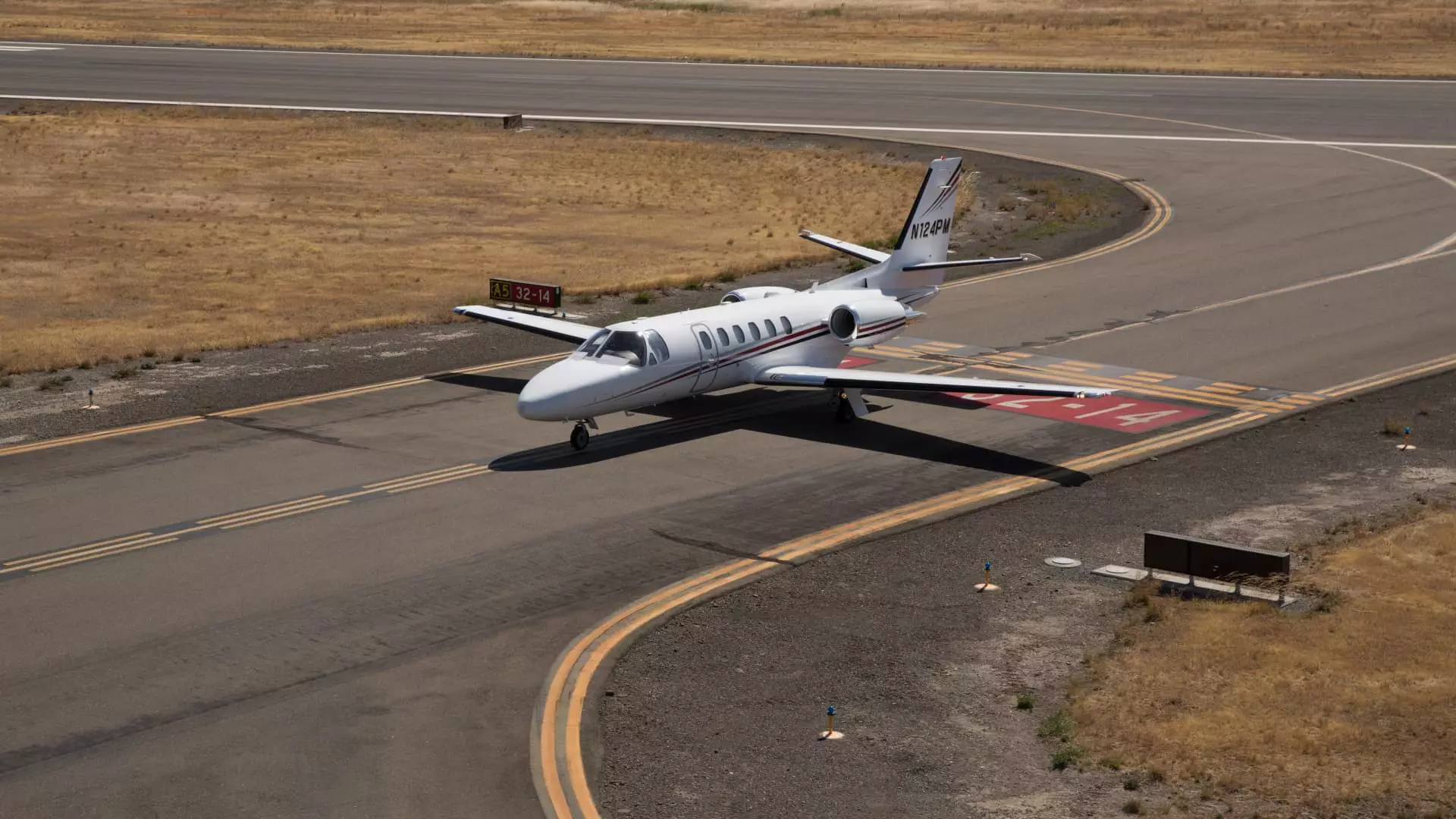The rapid decline in consumer confidence is wreaking havoc on various industries, and business aviation is no exception. The fact that even affluent travelers are pulling back from making sizeable investments in private jets underscores a growing sense of uncertainty in the economy. According to a recent survey by Barclays involving business jet broker-dealers and financiers, interest in purchasing business jets plummeted by an astounding 49% since March. Such a drastic reduction in demand is not merely a trend but a potential precursor to an extended stagnation in the market.
The survey, conducted between April 9 and 15, included 65 respondents who provided insights into their perspectives on the current state of business aviation. A composite score—a weighted measure of expert sentiment—dropped from 52 to a concerning 40. This score isn’t just a random number; it serves as a litmus test for the financial health of airplane manufacturers. In this context, a score of 40 signals that new orders are lagging significantly behind what these manufacturers are capable of producing. As David Strauss, a Barclays analyst, pointed out, this sentiment collapse indicates a turmoil that extends beyond typical seasonal fluctuations.
The Tariff Dilemma: An Overarching Concern
While the existing economic landscape is daunting, one of the most significant elements contributing to this decline is the looming uncertainty surrounding tariffs. In a market already rife with fear, the hesitation to purchase jets is amplified. Ninety-three percent of survey respondents reflected a belief that tariffs would negatively impact new aircraft demand, with a majority expecting severe repercussions. This overwhelming consensus raises questions about not only the short-term viability of business jet sales but also the long-term health of the entire aviation sector.
The persistent fear that tariffs will hinder businesses is palpable. Almost half of the participants in the survey expressed concerns about the impact tariffs could have on their buyers’ operational capabilities, leading them to place aircraft purchases on hold. It is a troubling sign—when potential customers are consumed by fears of external economic pressures, whole industries risk destabilization.
Pessimism Around Used Jets: A Prevalent Sentiment
The outlook regarding the demand for used jets is equally grim. A significant 67% of respondents indicated that they foresee either a significant or minor negative impact on demand for pre-owned aircraft. This suggests a compounded layer of uncertainty, which isn’t just confined to new aircraft purchases. The reluctance to engage in used jets signals a chilling effect throughout the aviation market, considering that these transactions are typically viewed as safer bets during economic downturns.
The minimal percentage of respondents (27%) anticipating an increase in used jet demand starkly contrasts with the overarching pessimism. It illustrates the depth of the crisis: even typically resilient markets like used aircraft are not immune to the broader malaise.
Potential Policy Relief: A Double-Edged Sword
Amid such bleak predictions, a glimmer of hope emerges from ongoing legislative developments. The Senate and House of Representatives have adopted a budget resolution seeking to extend provisions of the Tax Cuts and Jobs Act (TCJA). This act allowed immediate deductions of 100% for eligible equipment purchases—a potential lifeline for business jet manufacturers struggling to navigate through turbulent waters.
However, even this silver lining is fraught with complications. While proposed legislative changes might rejuvenate demand for new jets, the underlying concerns in the aviation market won’t simply vanish. The complexities of economic variables and consumer sentiment make legislative measures a risky gamble. Moreover, they extend a lifeline primarily to manufacturers, often sidelining the consumer’s anxiety.
A Market on Edge
The cascading failures marked by decreased customer interest, tariff-induced fears, and a cautious outlook on used aircraft purchases create a perfect storm for business aviation. One must recognize that while market sentiments can shift, the sustained pessimism highlights the fragility of the economic conditions surrounding aviation.
In this environment, the aviation industry must not only adapt but also innovate. Businesses should actively engage with potential buyers to address their concerns directly, rather than waiting for favorable legislation. The onus is now on the industry stakeholders to reclaim consumer confidence in an era of heightened uncertainty.


Leave a Reply